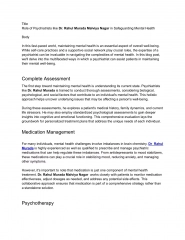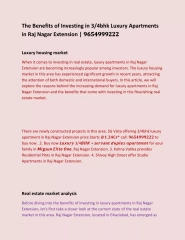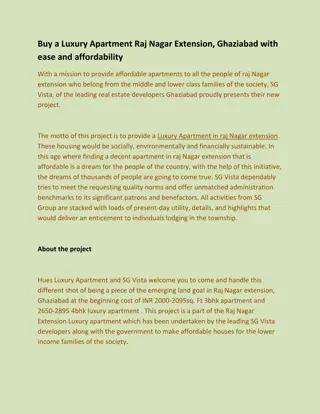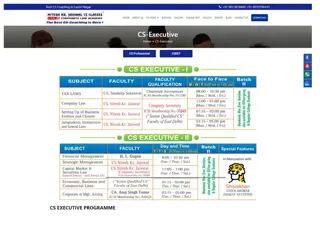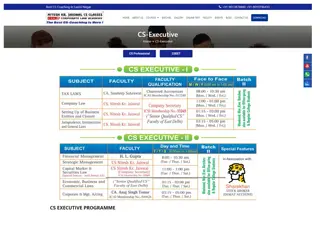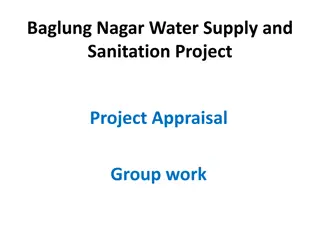
Understanding Basic Principles of Accounting
Learn about the fundamental principles of accounting including the relationship between debit and credit, handling stock discrepancies, addressing drawing account balance issues, dealing with dishonored cheques, and accounting for machinery transactions. Gain insights into practical solutions for common accounting problems.
Uploaded on | 2 Views
Download Presentation

Please find below an Image/Link to download the presentation.
The content on the website is provided AS IS for your information and personal use only. It may not be sold, licensed, or shared on other websites without obtaining consent from the author. If you encounter any issues during the download, it is possible that the publisher has removed the file from their server.
You are allowed to download the files provided on this website for personal or commercial use, subject to the condition that they are used lawfully. All files are the property of their respective owners.
The content on the website is provided AS IS for your information and personal use only. It may not be sold, licensed, or shared on other websites without obtaining consent from the author.
E N D
Presentation Transcript
B.COM 1STYEAR, 2018 Prepared by Dr. Biswajit Bhadra
Basic Principles: If Debit increases, Credit will also increase If Debit decreases, Credit will also decrease If Debit increases, Debit will decrease If Credit increases, Credit will decrease
Problem: Problem: Stock was not taken on 31.03.2018 but only on 7.04.2018. The transactions from 01.04.2018 to 07.04.2018 are sales Rs. 25000; Purchases Rs. 15000; Stock on 07.04.2018 Rs. 18000 and the gross profit @ 20% on sales. Solution: Solution: Calculation of stock: Stock on 07.04.2018 18000 Calculation of stock: Add: Cost of goods sold during the period 1stto 7thApril Sales Less; Gross Profit @ 20% 5000 25000 20000 --------- ---------- 38000 Less: Purchases during the period from 1stto 7thApril 15000 ------------ 23000 Closing Stock on 31.03.2018 Closing Stock on 31.03.2018 23000 ------------
Problem: Problem: Drawing account balance includes an item Rs. 5000 drawn in cash for the purchase of stationery which was used in business Solution: Solution: From Drawing account in the Balance sheet Rs. 5000 is to be deducted and Rs. 5000 is to be shown in the Debit side of Profit & Loss Account.
Problem: Problem: Two dishonoured cheques for Rs. 40000 and Rs. 60000 respectively had not been entered in the Cash Book. The first for Rs. 40000 is known to be bad. In the case of the second cheque for Rs. 60000, it is expected that the debtor would be in a position to pay a dividend of 60 paisa in the rupee. Solution: Solution: From the Debtors account in the Balance Sheet Rs. 40000 to be deducted as Bad Debt and 40% on Rs. 60000 to be deducted from Debtors as Provision for doubtful debts. Both Rs. 40000 and Rs. 40% on Rs. 60000 = 24000 are to be shown as Bad Debt and Provision for doubtful debts in the Profit & Loss Account.
Problem: Machinery which stood at Rs. 120000 in the books on 1stJanuary 2017 was disposed of for Rs 58000 on 30thJune, 2017 in part exchange for a new machine costing Rs. 104000. The net amount payable Rs 46000 was passed through the purchase book by mistake. Rate of Depreciation on machinery @10% p.a. Problem: Solution: In the Balance Sheet: Machinery (say) Less: Disposal Solution: In the Balance Sheet: 1360000 120000 ------------ 1240000 104000 ------------- 1344000 129200 ------------ 1214800 Add Purchase Less Depreciation (on furniture use) ## ## Depreciation on Machinery: On Rs. 120000 for 6 months @ 10% On Rs. 1240000 for 1 year @ 10% On Rs. 104000 for 6 months @ 10% 6000 124000 5200 ------- 135200 -------
In the Profit & Loss Account: In the Profit & Loss Account: Rs. 135200 to be shown as Depreciation in the Debit side Problem: Problem: Salary of Rs. 20000 paid to an employee had been entered in the cash book as Rs 10000. Solution : Solution : In the Profit & Loss Account: In the Profit & Loss Account: Rs. 10000 to be added with the amount of Salary In the Balance Sheet: In the Balance Sheet: From Cash amount Rs 10000 is to be deducted
Problem: Problem: Furniture had been sold during the year for Rs. 20000 and the proceeds had been credited to furniture account. The written down value of furniture sold was Rs. 8000. Solution Solution In the Balance Sheet In the Balance Sheet Furniture Add profit credited 12000 ----------
In the Profit & Loss Account: In the Profit & Loss Account: Rs. 12000 is to be recorded on the credit side as Profit on sale of furniture Problem: Problem: A sum of Rs. 25000 received from a party who had purchased some stock belonging to a separate business of the proprietor was credited to the Sundry Debtors account. Solution : Solution : Rs. 25000 is to be added with Sundry Debtors and Rs. 25000 to be added as Fresh capital with the Capital amount of the Balance Sheet.
Problem: Problem: Bills receivable include a dishonoured bill of Rs 16000 Solution: Solution: From Bills Receivable Rs. 16000 to be deducted and Rs 16000 to be added with Debtors as Dishonoured bill.




